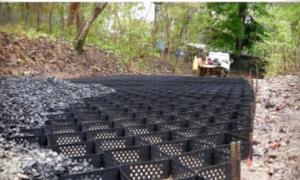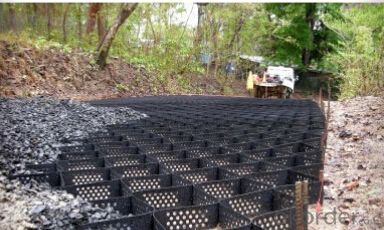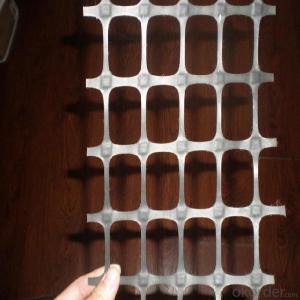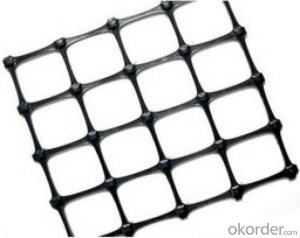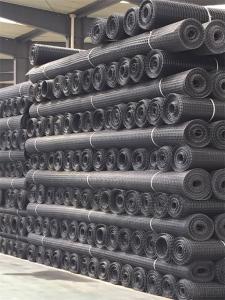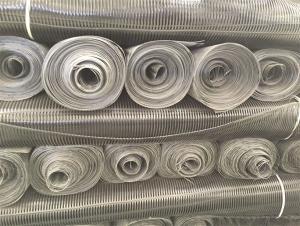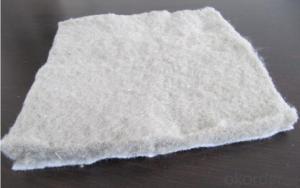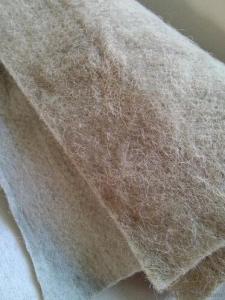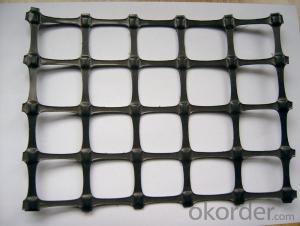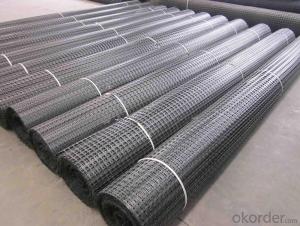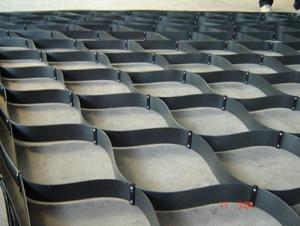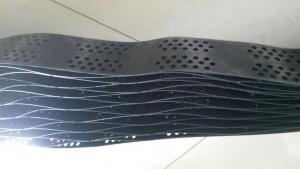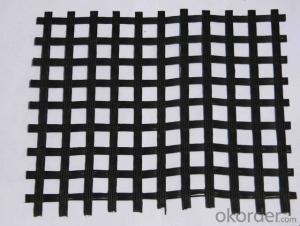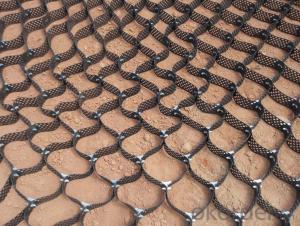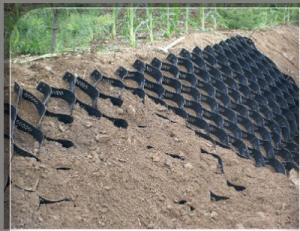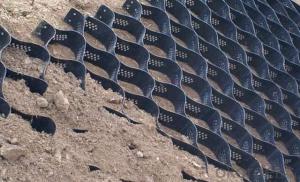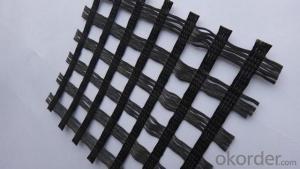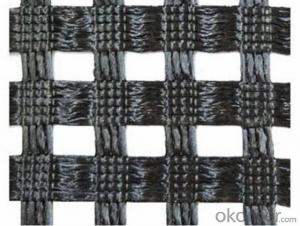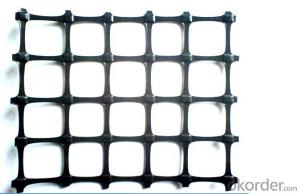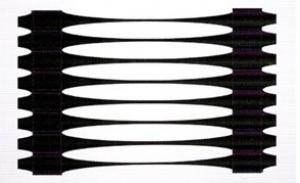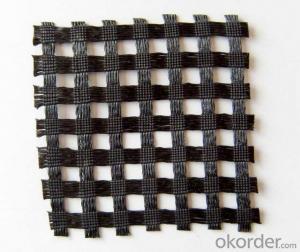HDPE Geocell Steel Reinforced Smooth Geocell Grass Paver with Geogrids for Velocity Slopes
- Loading Port:
- Tianjin
- Payment Terms:
- TT or LC
- Min Order Qty:
- 1000 m²
- Supply Capability:
- 1900000 m²/month
OKorder Service Pledge
OKorder Financial Service
You Might Also Like
The description of Steel Reinforced Geocell for Reforcement treatment for soft soil foundation and steep slope protection highway airport desert mountain and swamp land
Steel reinforced geocell is made by double braided plug-in plug connecting high strength thermoplastic sheets, tensile strength of sheets and tensile strength of welding points is consistent, formed a integrated geocell, fully applied the stereoscopic reinforced effect of geocell.
Specification of Steel Reinforced Geocell for Reforcement treatment for soft soil foundation and steep slope protection highway airport desert mountain and swamp land
TG LG5. TG LG8. TG LGIO. TG LG15. TGLG20 ( cm )
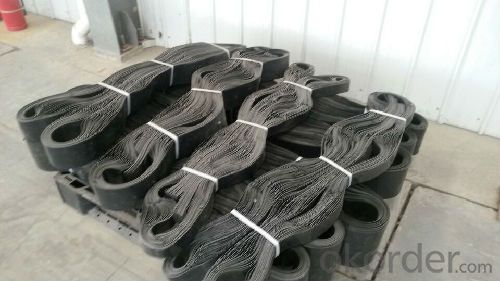
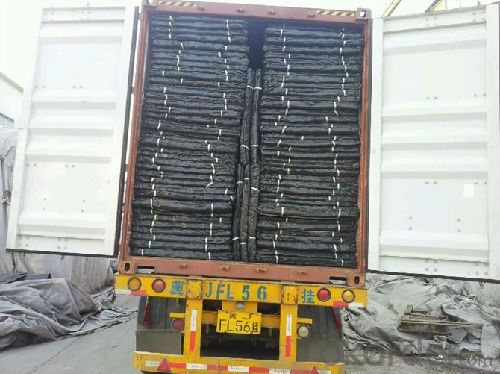
Property of Steel Reinforced Geocell for Reforcement treatment for soft soil foundation and steep slope protection highway airport desert mountain and swamp land
I. Retractile, foldable when transportation, pulled to network when construction, fill in the soil, gravel, concrete etc. Loose materials, form one structu re with strong lateral limitations and high stiffness
2. Material is light, abrasion resistance, chemical properties stable, resist photooxidation aging, acid and alkali resistant, suitable for different soil and soil conditions, such as desert
3. Good lateral restrict and prevent slippery, prevent deformation, effectively enhance the bearing capacity of subgrade and dispersed loads function
4. The geocell height and welding dista nce etc. Geometric dimensions are all changeable in order to meet the requirements of different projects
5. Capable and easily be expanded or contracted, small size for transportation, easy for connect and construction speed is fast
Application of Steel Reinforced Geocell for Reforcement treatment for soft soil foundation and steep slope protection highway airport desert mountain and swamp land
Reinforcement treatment for soft soil foundation and steep slope protection, used in highway,
Railway, airport, wharf, especially in airslaked mountain, desert and swamp land etc.
Area |
|
Hydraulic | Lagooning and Water Treatment, Ornamental Ponds, Golf Courses Aquaculture and Desalination Water LagoonsTanks, Reservoirs, Liquid WasteFloating Cover SolutionsDrainage and FiltrationShading Cover Solutions |
Environment | Tailing ponds, Leach mining,Landfills,Landfill Capping,Protection against corrosion,Vertical Barriers |
Civil Works | Erosion Control, Secondary Containment, Tunnels,Linear and Surface Works,Consolidation of Margins,Soil Reinforcement,Soil Separation. |
Building | Parkings,Roofing,Soundproofing building |
- Q: Which floor is paved on the roadbed
- The paving surface construction method of plastic geogrid, geogrid 1 should be smooth, laying layer after acceptance, to prevent longitudinal askew phenomenon, first according to the width in laying layer or draw white thread, you can start laying, then use the U nail fixed grid end (per meter wide with a nail 4, uniform fixed distance)
- Q: Are geogrids suitable for reinforcing steep slopes?
- Yes, geogrids are suitable for reinforcing steep slopes. Geogrids are commonly used in slope stabilization and reinforcement applications due to their high tensile strength and stability. They can effectively distribute and transfer the load of the soil, reducing erosion and preventing slope failures.
- Q: Where the geogrid is the cheapest! Plastic fiber polyester fiberglass geogrid there?
- Geogrid is a kind of main geosynthetics, which has unique properties and effects compared with other geosynthetics. Geogrid is often used as reinforcement of reinforced soil structure or composite material. Geogrid is divided into four categories: plastic geogrid, steel plastic geogrid, fiberglass geogrid and fiberglass polyester geogrid. 1) Plastic Geogrid
- Q: How do geogrids improve soil confinement?
- Geogrids improve soil confinement by effectively distributing the applied loads across a wider area, reducing the concentration of stress on the soil. This prevents soil displacement and improves overall stability, ensuring that the soil remains confined and compacted.
- Q: How do geogrids improve the performance of geosynthetic-reinforced retaining walls?
- Geogrids improve the performance of geosynthetic-reinforced retaining walls by providing additional stability and strength. They work by distributing the lateral forces exerted on the wall more evenly, reducing the chances of wall failure or deformation. Geogrids also enhance the overall load-bearing capacity of the wall, allowing for the construction of taller and more efficient retaining structures.
- Q: And specification.. Thank you for answering me
- It is estimated that which is the boring manufacturers to use basalt fiber grille
- Q: Are geogrids suitable for use in soil reinforcement for coastal protection structures?
- Yes, geogrids are suitable for use in soil reinforcement for coastal protection structures. They are commonly used to enhance the stability and strength of soils in coastal areas, providing effective erosion control and protection against wave action and tidal forces. Geogrids help to distribute loads and reinforce the soil, preventing erosion and maintaining the integrity of coastal protection structures.
- Q: Can geogrids be used in reinforcement of underground pipelines?
- Yes, geogrids can be used in the reinforcement of underground pipelines. Geogrids are a type of geosynthetic material that provide additional support and stability to the surrounding soil, preventing the pipeline from experiencing excessive deformation or damage. They are commonly used in pipeline installation and rehabilitation projects to increase the overall strength and load-bearing capacity of the soil, ensuring the long-term stability and functionality of the underground pipelines.
- Q: Are geogrids effective in preventing soil erosion on slopes without vegetation?
- Yes, geogrids are effective in preventing soil erosion on slopes without vegetation. Geogrids are synthetic materials that are designed to reinforce and stabilize soil, providing structural support to prevent erosion. They are commonly used in areas where vegetation is not present or cannot be established, such as construction sites or steep slopes. Geogrids improve soil stability, distribute load forces, and enhance water drainage, effectively reducing soil erosion.
- Q: Can geogrids be used in reinforcement of mechanically stabilized earth bridge abutments?
- Yes, geogrids can be used in the reinforcement of mechanically stabilized earth bridge abutments. Geogrids are commonly used in geotechnical engineering to enhance the stability and strength of soil structures, such as bridge abutments. They provide tensile strength and distribute loads, improving the overall performance and longevity of the structure.
Send your message to us
HDPE Geocell Steel Reinforced Smooth Geocell Grass Paver with Geogrids for Velocity Slopes
- Loading Port:
- Tianjin
- Payment Terms:
- TT or LC
- Min Order Qty:
- 1000 m²
- Supply Capability:
- 1900000 m²/month
OKorder Service Pledge
OKorder Financial Service
Similar products
Hot products
Hot Searches
Related keywords
